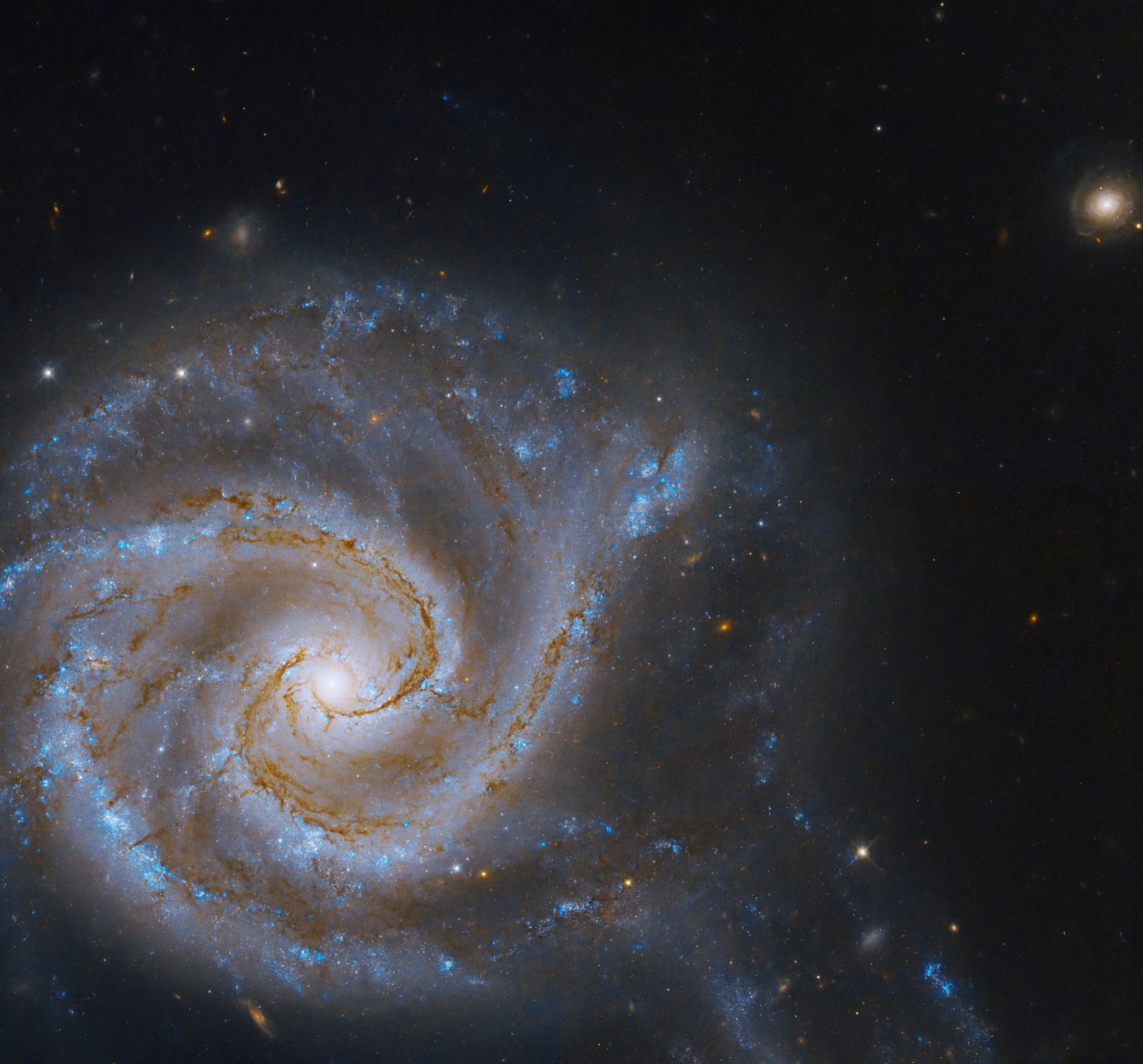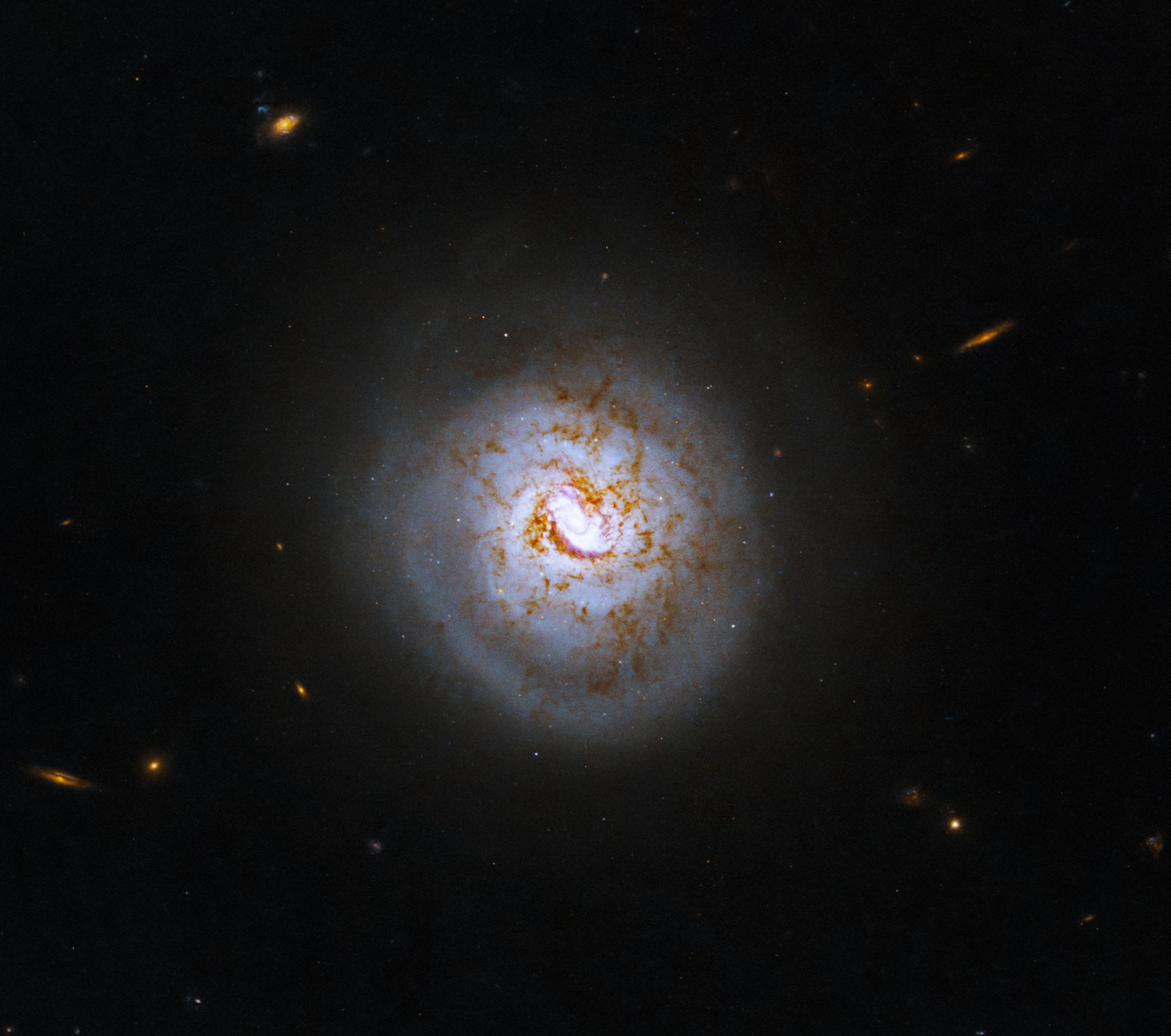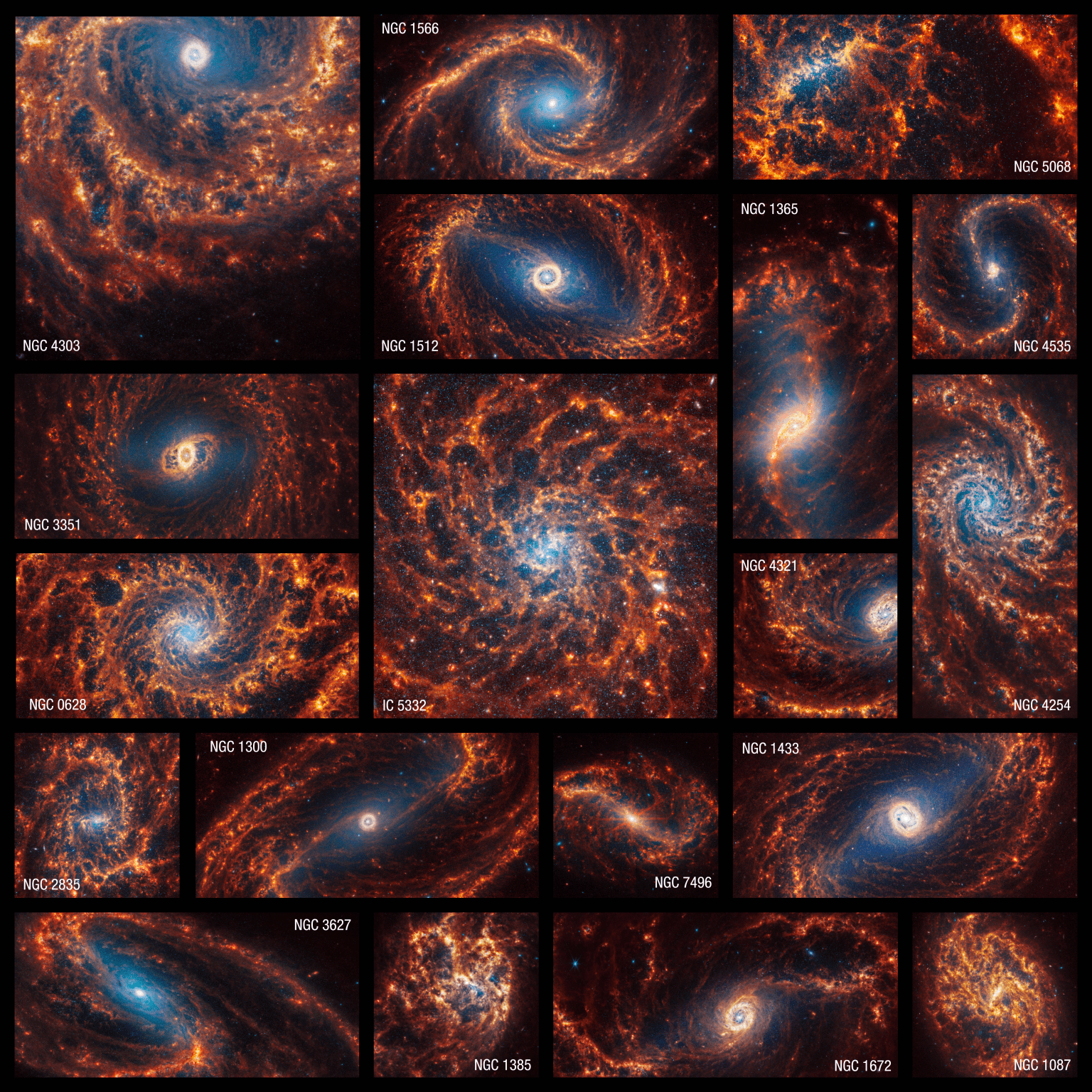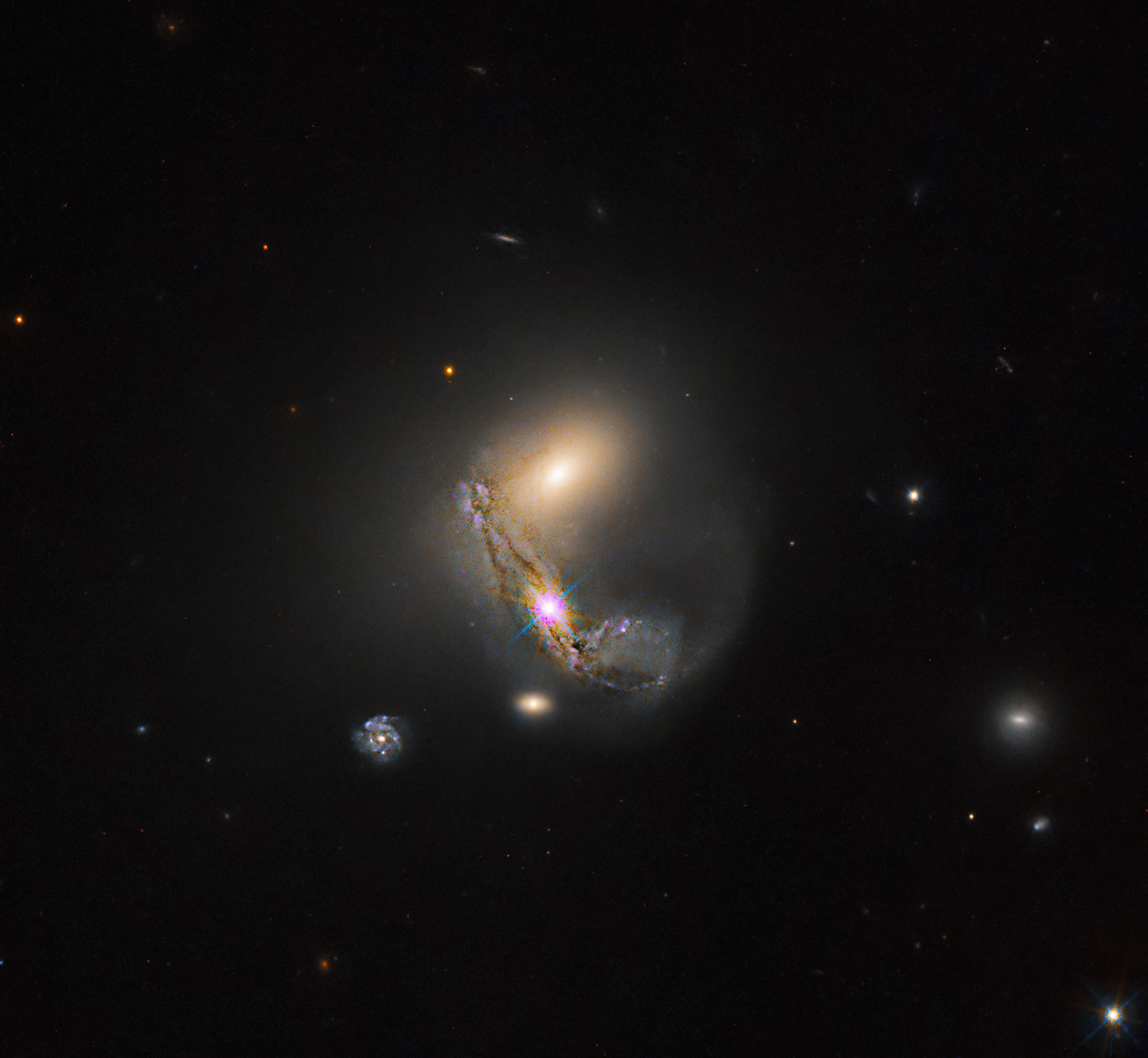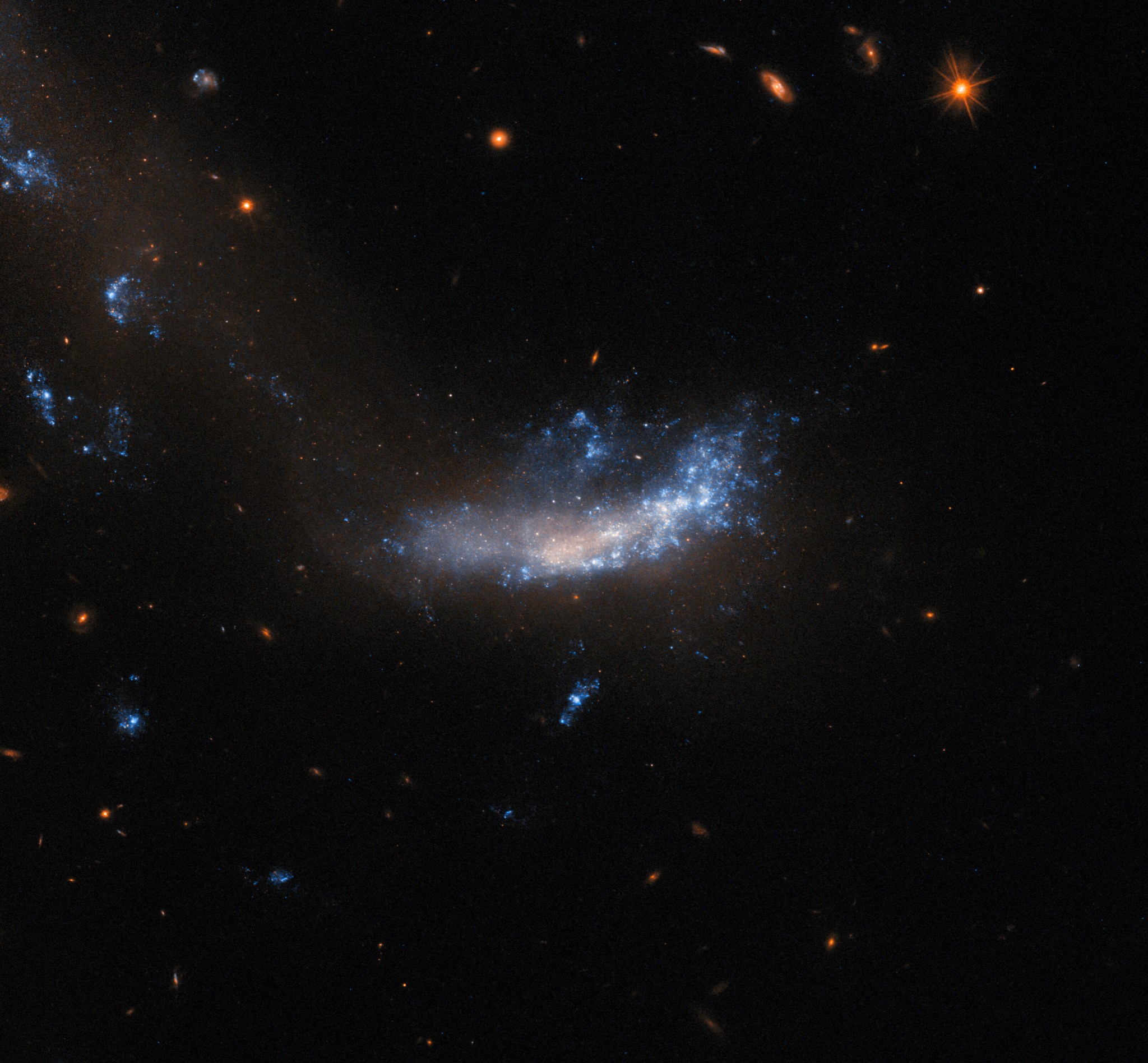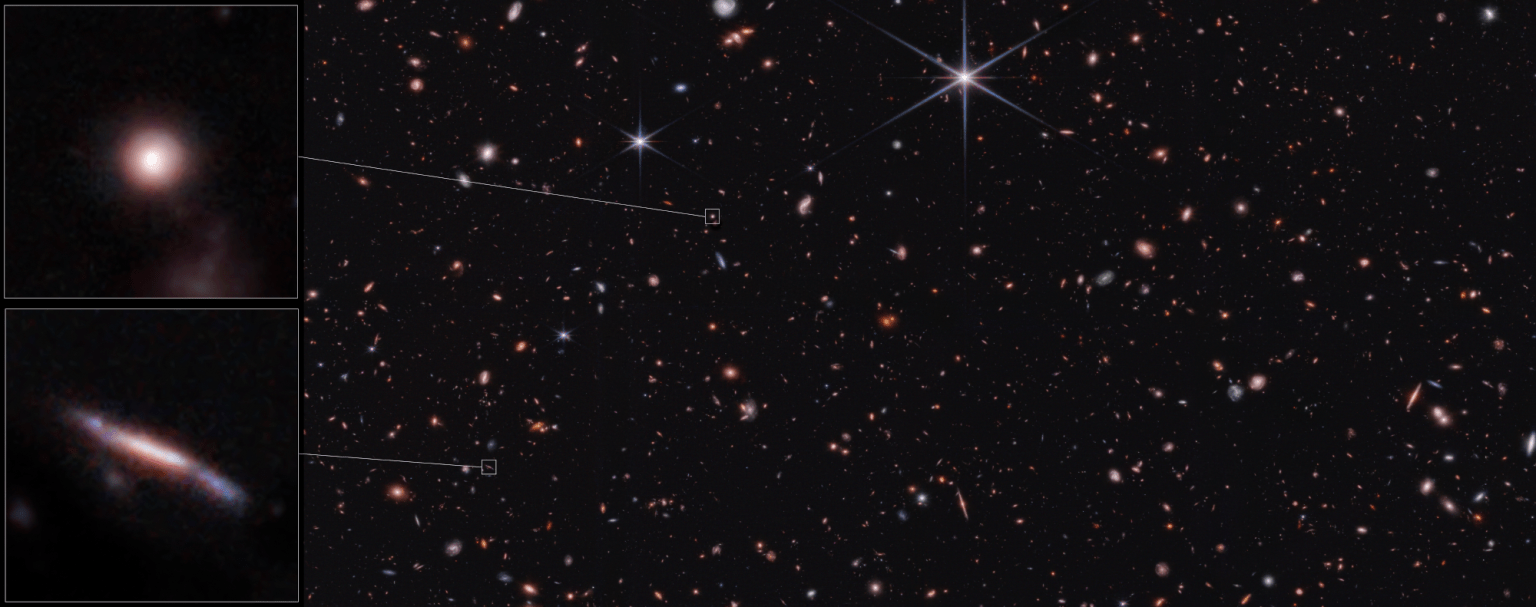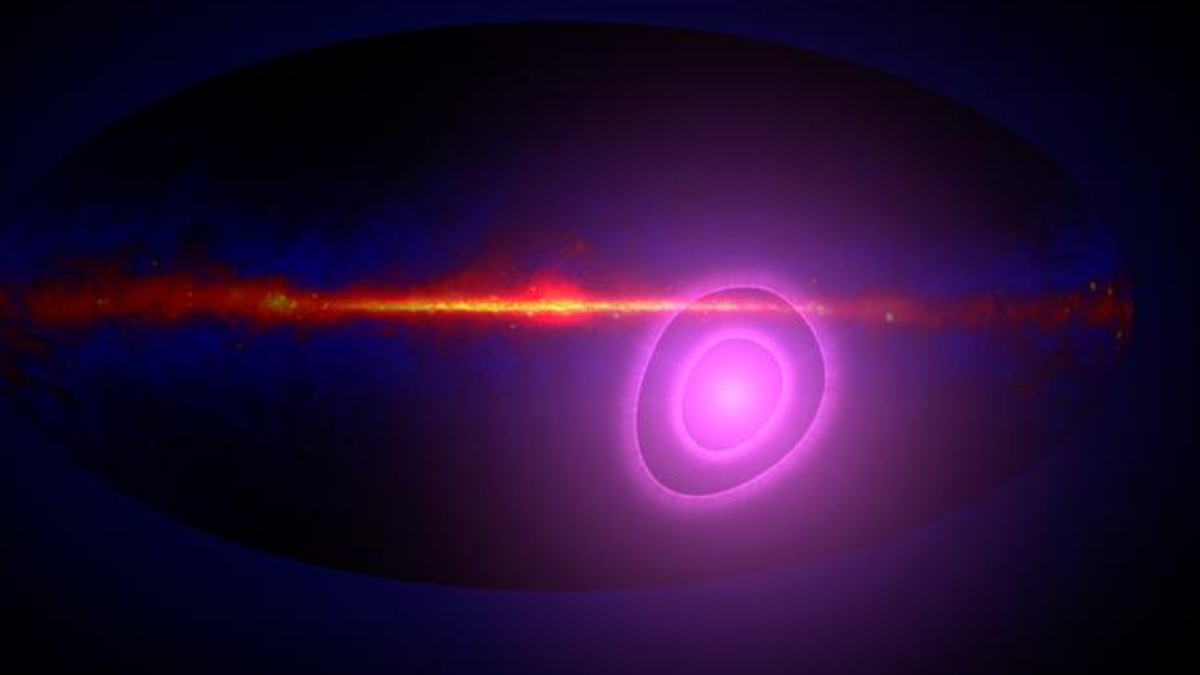1 min read Hubble Observes a Galactic Distortion The galaxy NGC 5427 shines in this new NASA Hubble Space Telescope image. NASA, ESA, and R. Foley (University of California – Santa Cruz); Processing: Gladys Kober (NASA/Catholic University of America) The galaxy NGC 5427 shines in this new NASA Hubble Space Telescope image. It’s part of the galaxy pair Arp 271, and its companion NGC 5426 is located below this galaxy and outside of this image’s frame. However, the effects of the pair’s gravitational attraction is visible in the galactic distortion…
Read MoreTag: Galaxies
Hubble Spies a Spinning Spiral
2 min read Hubble Spies a Spinning Spiral This new NASA Hubble Space Telescope image features the face-on spiral and Seyfert galaxy, ESO 420-G013. NASA/ESA/A. Evans (University of Virginia)/Processing: Gladys Kober (NASA/Catholic University of America) Looking like a baseball lobbed into the depths of the universe, ESO 420-G013 is a face-on spiral galaxy and a Seyfert galaxy. Dark lanes of dust are visible against the background glow of the galaxy’s many stars. About 10 percent of all the galaxies in the universe are thought to be Seyfert galaxies. They are…
Read MoreNASA’s Webb Depicts Staggering Structure in 19 Nearby Spiral Galaxies
6 Min Read NASA’s Webb Depicts Staggering Structure in 19 Nearby Spiral Galaxies Webb’s set of 19 PHANGS images of face-on spiral galaxies. Credits: NASA, ESA, CSA, STScI, Janice Lee (STScI), Thomas Williams (Oxford), and the PHANGS team It’s oh-so-easy to be absolutely mesmerized by these spiral galaxies. Follow their clearly defined arms, which are brimming with stars, to their centers, where there may be old star clusters and – sometimes – active supermassive black holes. Only NASA’s James Webb Space Telescope can deliver highly detailed scenes of nearby galaxies…
Read MoreHubble Studies a Sparkling Galaxy Pair
1 min read Hubble Studies a Sparkling Galaxy Pair This new NASA Hubble Space Telescope image features a pair of interacting galaxies called, NGC 5410 and UGC 8932/PGC 49896. NASA/ESA/D. Bowen (Princeton University)/Processing: Gladys Kober (NASA/Catholic University of America) A pair of small, interacting galaxies shine in this new NASA Hubble Space Telescope image. The larger of the two galaxies is named NGC 5410 and was discovered in 1787 by British astronomer William Herschel. It spans 80,000 light-years across and has a bright white bar of stars at its center.…
Read MoreHubble Glimpses a Bright Galaxy Group
2 min read Hubble Glimpses a Bright Galaxy Group This new NASA Hubble Space Telescope image shows a tangled group of interacting galaxies called LEDA 60847. NASA/ESA/A. Barth (University of California – Irvine)/M. Koss (Eureka Scientific Inc.)/A. Robinson (Rochester Institute of Technology)/Processing: Gladys Kober (NASA/Catholic University of America) This new NASA Hubble Space Telescope image shows a group of interacting galaxies known as LEDA 60847. LEDA 60847 is classified as an active galactic nuclei, or AGN. An AGN has a supermassive black hole in the galaxy’s central region that is…
Read MoreHubble Observes an Askew Galaxy Coaxing Star Formation from its Partner
2 min read Hubble Observes an Askew Galaxy Coaxing Star Formation from its Partner This new NASA Hubble Space Telescope image features two interacting spiral galaxies collectively called Arp 300. NASA, ESA, J. Dalcanton (University of Washington), and R. Windhorst (Arizona State University); Processing: Gladys Kober (NASA/Catholic University of America) Arp 300 consists of two interacting galaxies, UGC 05028 (the smaller face-on spiral galaxy) and UGC 05029 (the larger face-on spiral). Likely due to its gravitational dance with its larger partner, UGC 05028 has an asymmetric, irregular structure, which is…
Read MoreHubble Views a Galactic Supernova Site
2 min read Hubble Views a Galactic Supernova Site This NASA Hubble Space Telescope image is of the small galaxy known as UGC 5189A. ESA/Hubble & NASA, A. Filippenko This image features a relatively small galaxy known as UGC 5189A, which is located about 150 million light-years away in the constellation Leo. This galaxy was observed by the NASA/ESA Hubble Space Telescope to study a supernova explosion in 2010 known as SN 2010jl. This particular supernova is notable because it was an exceptionally luminous supernova event. In fact, over a period of three years,…
Read MoreWebb Shows Many Early Galaxies Looked Like Pool Noodles, Surfboards
5 Min Read Webb Shows Many Early Galaxies Looked Like Pool Noodles, Surfboards Researchers are analyzing distant galaxies when the universe was only 600 million to 6 billion years old. Credits: NASA, ESA, CSA, Steve Finkelstein (UT Austin), Micaela Bagley (UT Austin), Rebecca Larson (UT Austin) Researchers analyzing images from NASA’s James Webb Space Telescope have found that galaxies in the early universe are often flat and elongated, like surfboards and pool noodles – and are rarely round, like volleyballs or frisbees. “Roughly 50 to 80% of the galaxies we…
Read MoreHow do we know what the Milky Way looks like?
Although our telescopes have captured some truly stunning images of the Milky Way, astronomers have only a vague understanding of our home galaxy. It took a lot of work even to get that sketch, and it’s amazing what we’ve been able to learn from our limited vantage point. Here on Earth’s surface, the Milky Way galaxy appears to the naked eye as a nebulous band across the sky. While astronomers and philosophers have debated the true nature and location of the Milky Way for ages, the great astronomer, physicist and…
Read MoreSurprise gamma-ray discovery could shed light on cosmic mystery
Astronomers have discovered an unexpected and unexplained feature outside our Milky Way galaxy that’s radiating high-energy light called gamma rays. The team behind the discovery, including NASA and University of Maryland cosmologist Alexander Kashlinsky, found the gamma-ray signal while searching through 13 years of data from NASA’s Fermi Telescope. “It is a completely serendipitous discovery,” Kashlinsky said in a statement. “We found a much stronger signal, and in a different part of the sky, than the one we were looking for.” What makes this gamma-ray signal even stranger is the…
Read More